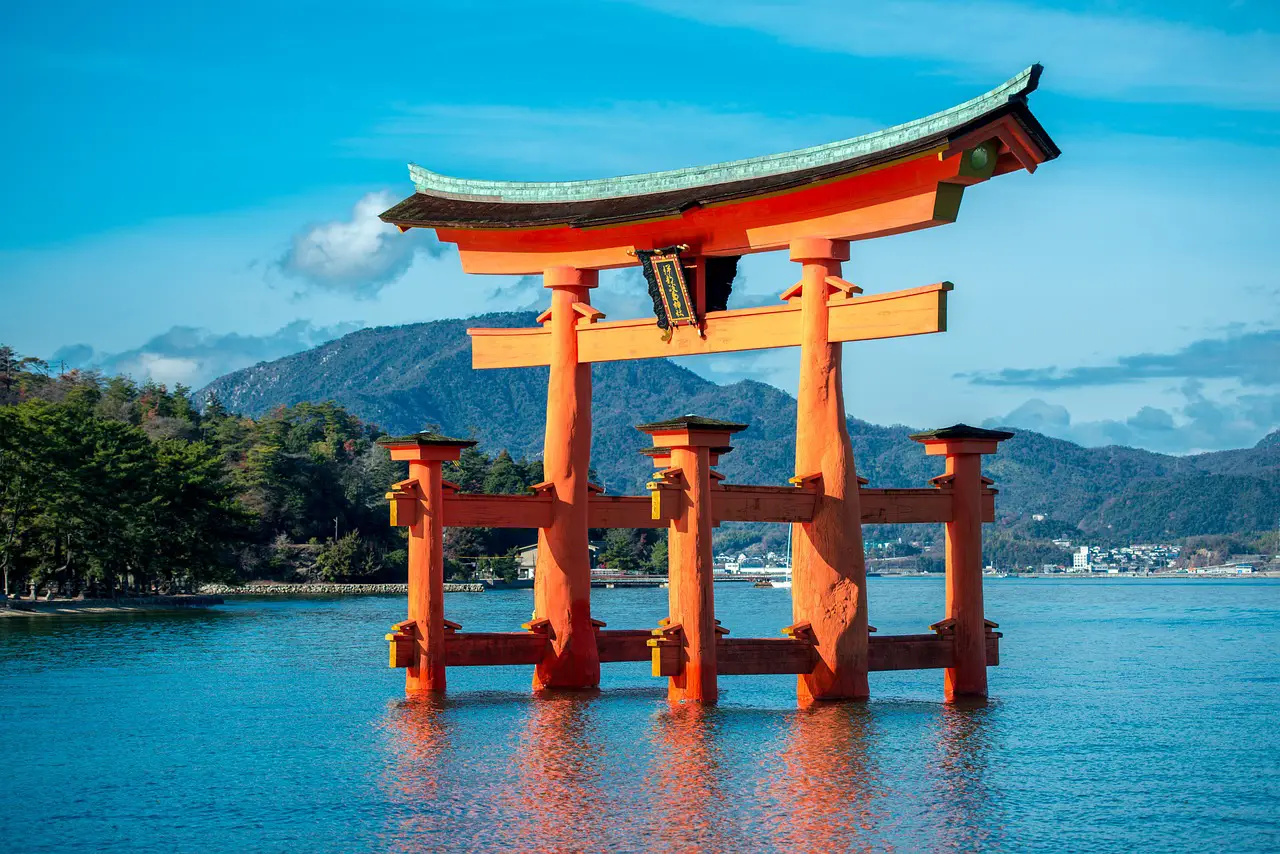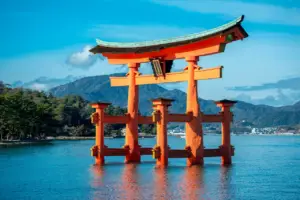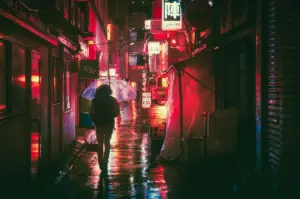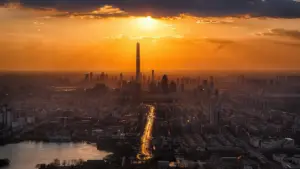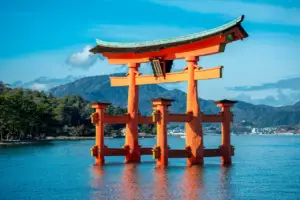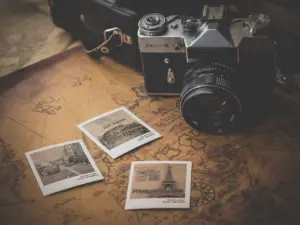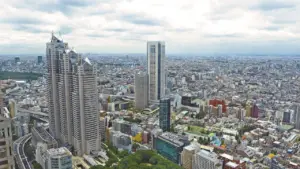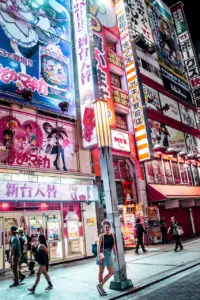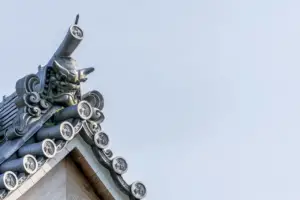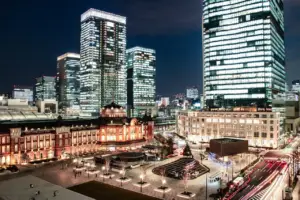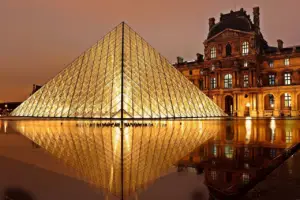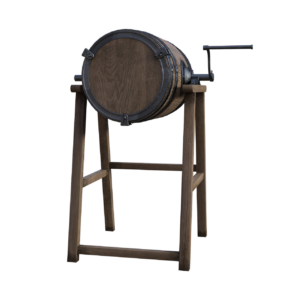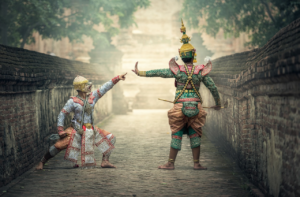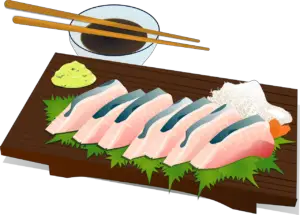Are you ready for a cultural journey through Japan’s historic city of Hiroshima? With this three-day itinerary, you’ll experience the city’s rich history, breathtaking scenery, and delicious cuisine. From paying your respects at the Hiroshima Peace Memorial Park to trying Hiroshima-style okonomiyaki, this itinerary has everything you need for an unforgettable cultural immersion.
On day one, you’ll start your journey by paying your respects at the Hiroshima Peace Memorial Park. Take a moment to reflect on the tragic events that unfolded in 1945 and learn about the city’s resilient spirit.
Afterward, stroll through the serene Shukkei-en Garden and admire the stunning landscapes.
Finish off your day by visiting the Hiroshima Castle and learn about the city’s feudal history.
Are you ready to start your journey through Hiroshima? Let’s go!
Key Takeaways
- Hiroshima offers a rich cultural experience, with key destinations including the Hiroshima Peace Memorial Park, Shukkei-en Garden, and Hiroshima Castle.
- Miyajima Island is a must-visit for its stunning natural beauty and cultural significance, including the Itsukushima Shrine and Mount Misen.
- Visitors should explore Hiroshima’s art and culture, with recommendations including the Hiroshima Peace Memorial Museum and Hiroshima Museum of Art.
- To fully immerse oneself in Hiroshima’s culture, it’s recommended to try local dishes like Hiroshima-style okonomiyaki and visit traditional izakayas. The city also has a vibrant nightlife scene, with Nagarekawa and Tatemachi offering different atmospheres for a night out.
Day 1: Pay Your Respects at the Hiroshima Peace Memorial Park
Before embarking on any other activities in Hiroshima, it’s essential to pay your respects at the Hiroshima Peace Memorial Park.
This park serves as a reminder of the devastating effects of nuclear weapons and pays homage to the victims of the atomic bomb that was dropped on the city in 1945.
As you walk through the park, you’ll see various memorials and monuments, including the Atomic Bomb Dome, which is a UNESCO World Heritage site.
The dome is a stark reminder of the destructive power of nuclear weapons and serves as a symbol of hope and peace.
In addition to the Atomic Bomb Dome, the park also houses the Hiroshima Peace Memorial Museum.
The museum provides visitors with a comprehensive understanding of the events that led up to the bombing, the aftermath of the bombing, and the efforts to promote peace and nuclear disarmament.
It’s a sobering experience that shouldn’t be missed, as it provides a glimpse into the horrors of war and the consequences of using nuclear weapons.
Overall, the Hiroshima Peace Memorial Park is a must-visit destination for anyone traveling to Hiroshima, as it serves as a powerful reminder of the importance of peace and the need to work towards a world free of nuclear weapons.
Day 1 (continued): Stroll Through the Shukkei-en Garden
As you continue your exploration of Hiroshima on the first day, take a leisurely stroll through the enchanting Shukkei-en Garden. This traditional Japanese garden was first built in 1620 and is filled with picturesque landscapes that will transport you to another world.
Here are three things you shouldn’t miss on your visit to Shukkei-en Garden:
-
Explore the garden’s tea house: The tea house in the center of the garden is a must-visit spot. Here, you can sit and enjoy a cup of traditional Japanese tea while gazing out at the beautiful scenery.
-
Admire the garden’s miniature landscapes: The garden is filled with miniature landscapes that are designed to look like distant mountains. These tiny landscapes are a testament to the skill and attention to detail of the garden’s designers.
-
Feed the koi fish: The garden is home to many koi fish, which you can feed with food purchased at the entrance. Watching these colorful fish swim and gather around you is a truly magical experience.
Day 1 (continued): Visit the Hiroshima Castle
As you’re continuing your first day in Hiroshima, make sure to visit the Hiroshima Castle. Here, you can learn about the history of the castle and its significance to the city.
Admire the stunning architecture and take in the beautiful views of the surrounding area.
Learn About the History of the Castle
Immerse yourself in the history of Hiroshima by exploring the castle and gaining insight into its past.
Hiroshima Castle was constructed during the 16th century and played an important role in the political and cultural history of Japan. It was built by a powerful samurai lord, Terumoto Mori, who was a key figure in the unification of Japan under the rule of Toyotomi Hideyoshi.
As you wander around the castle, you’ll learn about the various battles that took place in the surrounding area and how the castle was used as a base for military operations. You’ll also see exhibits that showcase the castle’s architecture and design, including its impressive stone walls and intricate wooden carvings.
Don’t forget to climb to the top of the castle’s tower for a breathtaking view of the city and surrounding landscape.
Admire the Stunning Architecture
Take a moment to appreciate the stunning architecture of Hiroshima Castle, from the intricate wooden carvings to the impressive stone walls. The castle was originally built in the late 1500s and underwent extensive renovations in the 1950s after being destroyed during World War II. The result is a beautiful blend of traditional Japanese design and modern engineering, making it a unique and fascinating attraction for visitors.
To really understand the intricacies of the castle’s design, take a closer look at the details. The wooden carvings on the doors and windows are intricate and beautiful, depicting scenes from Japanese mythology and history. The stone walls are equally impressive, with stones carefully selected and placed to create a sturdy and visually stunning structure. As you explore the castle grounds, be sure to take in the stunning views of the city from the top of the castle tower. It’s a truly breathtaking experience.
| Column 1 | Column 2 | Column 3 |
|---|---|---|
| Wooden carvings | Stone walls | Japanese mythology |
| Impressive structure | Stunning views | Intricate details |
| Blend of traditional and modern design | Extensive renovations | Fascinating attraction |
| Carefully selected stones | Visually stunning | Breathtaking experience |
| Late 1500s construction | World War II destruction | Hiroshima Castle |
Day 2: Explore Miyajima Island
After a day of exploring the city, you’ll want to hop on a ferry and head to Miyajima Island for a peaceful retreat away from the hustle and bustle of Hiroshima.
Located just a short distance from the city, Miyajima Island is a must-visit for its stunning natural beauty, rich history, and cultural significance.
Once you arrive on the island, take a stroll through the charming streets lined with traditional shops and restaurants. Don’t miss the famous Itsukushima Shrine, which is one of Japan’s most iconic landmarks.
The shrine is situated on the water’s edge and appears to float on the sea during high tide, creating a breathtaking sight that you won’t want to miss.
After exploring the shrine, take a cable car up to the top of Mount Misen for stunning panoramic views of the island and the surrounding Seto Inland Sea.
Miyajima Island is a perfect place to unwind, connect with nature, and immerse yourself in Japanese culture.
Day 2 (continued): Relax at a Local Onsen
You can unwind and soothe your muscles after a long day of exploring by relaxing at one of the local onsens on Miyajima Island. Onsen is a Japanese word for hot springs, and it has been a tradition in Japan for centuries. Miyajima Island has several onsens to choose from, and each one offers a unique experience. You can enjoy the hot water while admiring the beautiful scenery of the island. Here are some of the onsens you can visit:
| Onsen Name | Location | Features | Price |
|---|---|---|---|
| Miyajima Seaside Hotel | Near Itsukushima Shrine | Outdoor Bath, Sea View | ¥1,500 |
| Kurayado Iroha | Near Daisho-in Temple | Private Bath, Garden View | ¥3,000 |
| Miyajima Grand Hotel Arimoto | Near Miyajima Ferry Terminal | Indoor and Outdoor Bath, Mountain View | ¥2,500 |
| Miyajima Coral Hotel | Near Miyajima Public Aquarium | Outdoor Bath, Forest View | ¥1,200 |
After choosing an onsen that suits your preferences, you can soak in the hot water and let your worries melt away. Onsens are not only relaxing, but they also have health benefits. The minerals in the water can help improve blood circulation, relieve muscle pain, and rejuvenate the skin. So, take some time to pamper yourself and enjoy the natural hot springs of Miyajima Island.
Day 3: Learn About Hiroshima’s Art and Culture
Get ready to explore the fascinating art and culture of Hiroshima on the third day of your trip!
Start your day by visiting the Hiroshima Peace Memorial Museum. This museum serves as a reminder of the horrors of war and the importance of peace. You’ll have the chance to see artifacts and displays that showcase the impact of the atomic bomb on the city and its people. It’s a sobering experience, but one that’s important to understand the history and resilience of the people of Hiroshima.
After the museum, head to the Hiroshima Museum of Art. The museum has a collection of over 4,000 pieces, including works by both Japanese and Western artists. You’ll have the opportunity to see pieces from the Edo period and contemporary art as well. The museum is surrounded by beautiful gardens that offer a peaceful and tranquil atmosphere. Take your time to appreciate the beauty of the art and the surroundings.
Your final day in Hiroshima will be filled with knowledge and enlightenment as you learn about the city’s past and present through its art and culture.
Day 3 (continued): Try Hiroshima-Style Okonomiyaki
To truly experience Hiroshima’s culinary scene, don’t miss the chance to indulge in the city’s famous Hiroshima-style okonomiyaki.
This savory pancake-like dish is made with a base of batter and cabbage, and then topped with a variety of ingredients such as pork, shrimp, squid, cheese, and noodles.
The layers are cooked separately on a hot griddle and then combined to create a delicious and filling meal.
There are many places to try Hiroshima-style okonomiyaki in the city, but one of the most popular is Okonomimura, a building with multiple floors dedicated entirely to this dish.
Here, you can choose from over 20 different restaurants, each with their own unique take on the classic dish.
It’s a fun and lively atmosphere, and a great place to try something new and delicious.
Day 3 (continued): Experience Hiroshima’s Nightlife
As you continue with Day 3 of your ultimate Hiroshima itinerary, make sure to experience the city’s vibrant nightlife scene.
Start off by visiting a local izakaya where you can enjoy delicious food and drinks while mingling with the locals. Don’t forget to try some of the local sake, which is known for its unique flavors.
Visit a Local Izakaya
Indulge in the authentic local experience of a cozy and bustling izakaya, where you can savor the mouth-watering aroma of grilled skewers and sip on ice-cold glasses of beer.
Izakayas are traditional Japanese pubs that offer a range of small dishes, including yakitori (grilled chicken skewers), karaage (deep-fried chicken), and edamame (boiled soybeans). These casual dining establishments are the perfect spot to unwind after a day of sightseeing and mingle with locals.
When you step into an izakaya, you’ll be greeted by a lively atmosphere and friendly staff. The menu is often displayed on the walls in Japanese characters, but don’t worry, the servers are always happy to help you choose what to order.
Grab a seat at the counter or a table, and enjoy the lively chatter of Japanese patrons around you. Order a plate of sashimi or takoyaki (octopus balls) to complement your beer, and soak in the authentic local experience of a Japanese izakaya.
Try Local Sake
You can’t visit Japan without trying the local sake, so head to a nearby bar and let the bartender recommend a bottle that suits your taste. Sake is a traditional Japanese rice wine that has been brewed for centuries. It is made by fermenting rice and water, and its taste can range from sweet to dry, depending on the type of rice and the brewing process.
Here are three things to keep in mind when trying local sake:
1) Sake is meant to be sipped slowly, so take your time and enjoy the flavors.
2) Sake is often served chilled, but some types are best enjoyed at room temperature or even warm. Ask the bartender for their recommendation.
3) Pair your sake with some traditional Japanese snacks, such as edamame, yakitori, or tempura, to enhance the flavors and complete your cultural experience.
Enjoy the Vibrant Nightlife Scene
Now that you’ve had a taste of the local sake, it’s time to dive into the vibrant nightlife scene of Hiroshima. The city comes alive after dark with an array of options to choose from, whether you’re looking for a laid-back evening or a wild night out.
One popular spot is Nagarekawa, known for its bars and clubs catering to a younger crowd. Here, you can enjoy live music, dance the night away, and mingle with locals and tourists alike.
If you’re looking for a more relaxed atmosphere, head to the riverside district of Tatemachi. Here, you can find cozy bars and restaurants with outdoor seating, perfect for enjoying a glass of sake while taking in the beautiful scenery.
No matter what your preference, Hiroshima’s nightlife scene will leave you with unforgettable memories.
Frequently Asked Questions
What is the best time of year to visit Hiroshima for cultural immersion?
The best time to visit Hiroshima for cultural immersion is during the spring or fall. In the spring, you can witness the blooming of cherry blossoms and participate in the annual Hiroshima Flower Festival.
The fall season brings about the Chrysanthemum Doll Festival and the Hiroshima International Film Festival. Additionally, the weather during these seasons is mild and comfortable, making it easier to enjoy outdoor activities and explore the many cultural sites Hiroshima has to offer.
However, it’s important to note that Hiroshima can be crowded during these times, so plan accordingly and book accommodations in advance.
Are there any museums or exhibitions in the Peace Memorial Park that are worth visiting?
There are definitely museums and exhibitions in the Peace Memorial Park that are worth visiting.
You can start at the Hiroshima Peace Memorial Museum, which provides a detailed history of the atomic bombing and its aftermath.
Another notable museum is the Hiroshima National Peace Memorial Hall for the Atomic Bomb Victims, which honors the victims of the bombing and serves as a place for reflection and contemplation.
Additionally, the Atomic Bomb Dome, a UNESCO World Heritage Site, provides a powerful visual reminder of the devastation caused by the bombing.
All of these sites offer important opportunities to learn about the past and reflect on the importance of peace.
What is the history behind Hiroshima Castle and why is it significant to the city?
Hiroshima Castle, also known as Carp Castle, is a significant historical landmark in the city. It was originally built in the 1590s by feudal lord Mori Terumoto, as a symbol of his power and authority.
The castle played a strategic role in the Battle of Sekigahara in 1600, and was later destroyed by the atomic bomb in 1945. The current castle is a reconstruction, completed in 1958, and serves as a museum of the history and culture of Hiroshima.
It’s worth visiting to learn more about the city’s rich history and to enjoy the beautiful views from the top of the castle tower.
What are some other popular attractions on Miyajima Island besides the Itsukushima Shrine?
If you’re looking for other popular attractions on Miyajima Island besides the Itsukushima Shrine, there are plenty to choose from.
One option is the Daisho-in Temple, which is located near the entrance of the island and is known for its beautiful gardens and unique statues.
Another popular spot is Mount Misen, which can be accessed by hiking or taking a cable car to the summit. Once at the top, you can enjoy stunning views of the surrounding area and explore the various temples and shrines located there.
Finally, if you’re interested in learning more about the island’s history, you may want to visit the Miyajima History and Folklore Museum, which features exhibits on the island’s culture and traditions.
Can you recommend any specific onsen in Hiroshima for a relaxing experience?
If you’re looking for a relaxing onsen experience in Hiroshima, you may want to check out the Kurayado Iroha Onsen in Miyajima. This luxurious hot spring resort offers a variety of indoor and outdoor baths, as well as private open-air baths with stunning views of the Seto Inland Sea. The water is said to have healing properties and the tranquil atmosphere will help you unwind after a long day of sightseeing.
Don’t forget to try their delicious kaiseki-style meals featuring fresh seafood and local ingredients.
Conclusion
Congratulations! You’ve just completed an unforgettable 3-day cultural immersion in Hiroshima. From paying your respects at the Peace Memorial Park to exploring Miyajima Island, you’ve experienced the best of what this city has to offer.
On your final day, you learned about Hiroshima’s art and culture, tried the famous Hiroshima-style okonomiyaki, and experienced the vibrant nightlife. You’ve gained a deeper understanding and appreciation for the city’s history and traditions.
As you leave Hiroshima, take with you the memories and lessons learned during your trip. Remember to always pay your respects to the past, embrace new experiences, and immerse yourself in the culture of the places you visit.
Until next time, safe travels!



